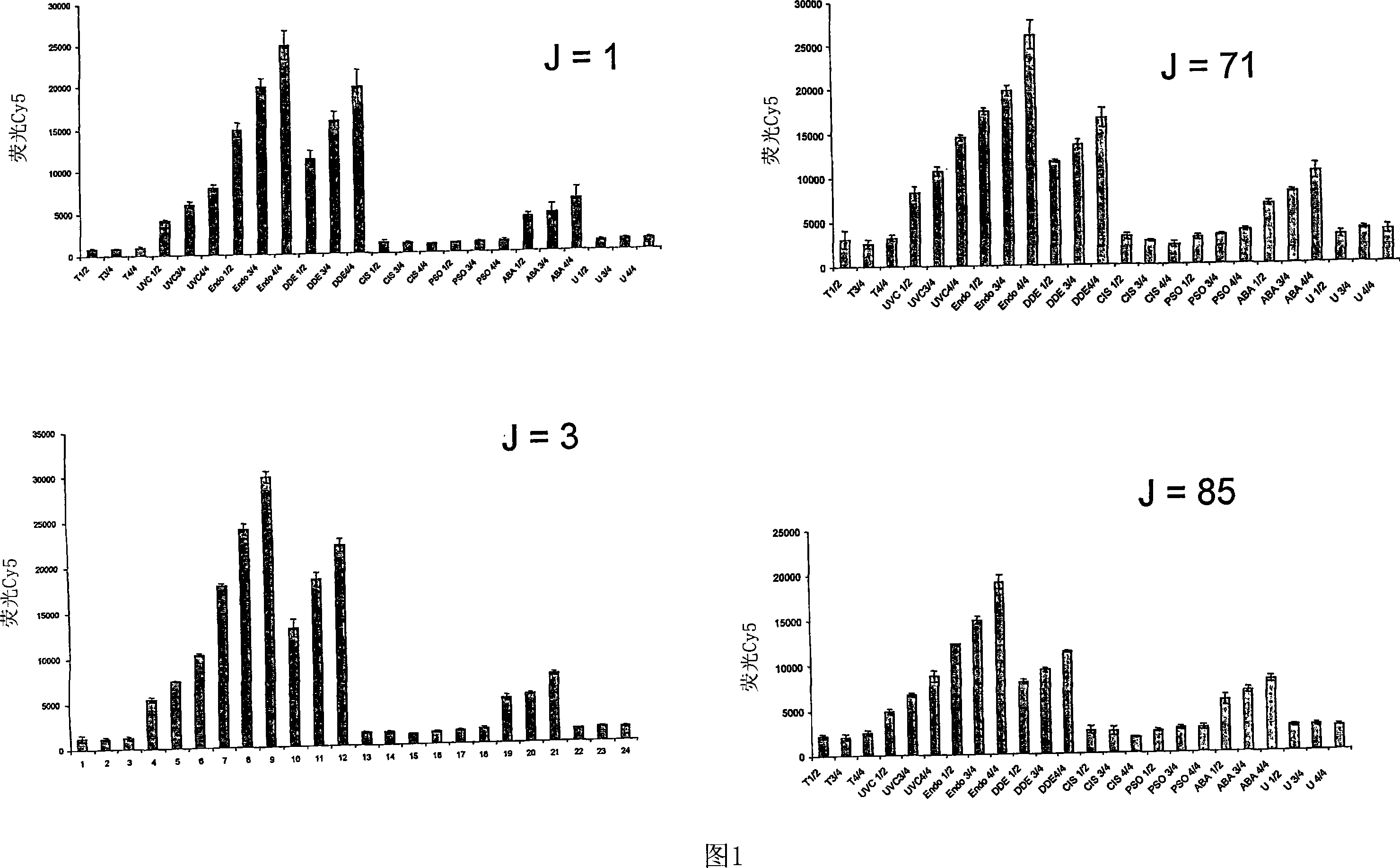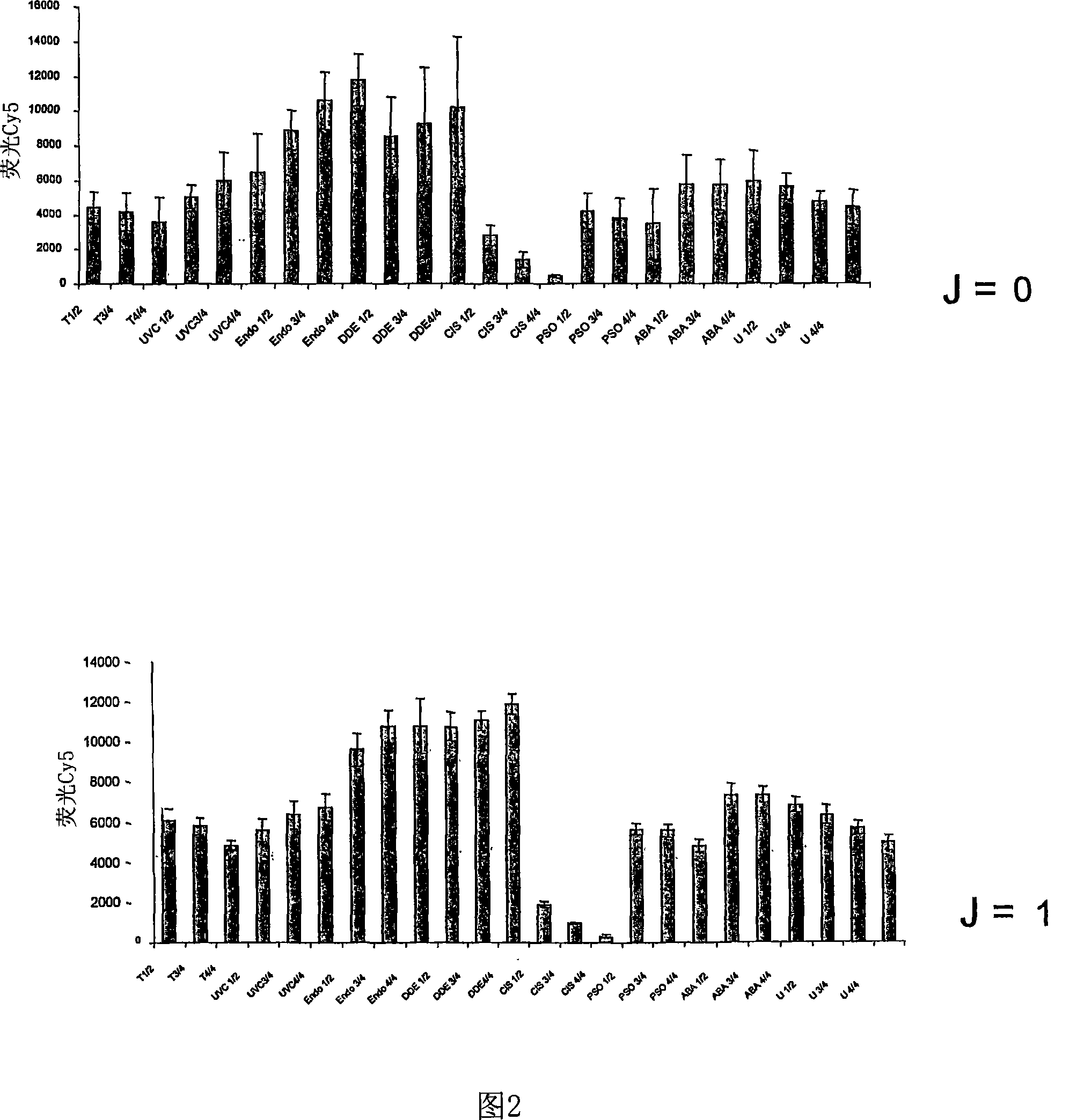Method for fixing a supercoiled DNA and the use for analysing the dna repair
A supercoiled, porous polymer technology, used in biochemical equipment and methods, transportation and packaging, and microbial assay/inspection, etc., can solve problems such as DNA damage, unpredictable covalent coupling, and plasmid fragmentation
- Summary
- Abstract
- Description
- Claims
- Application Information
AI Technical Summary
Problems solved by technology
Method used
Image
Examples
Embodiment
[0065] Example : Application of DNA Immobilized in Hydrogels as a Substrate for Analyzing DNA Repair
[0066] The principle of a DNA repair assay for comparing the repair of DNA immobilized on poly-L-lysine-coated or hydrogel-coated supports is described in patent application FR 0216435.
[0067]1) Materials and methods
[0068] a) Preparation of damaged supercoiled DNA
[0069] Plasmids (pBluescript II, Stratagene) were produced by transformation of the XL1 blue MRF chain of E. coli (Stratagene) according to the protocol provided by the supplier. Plasmid using Plasmidmidi kit TM (Qiagen) and diluted in PBS buffer (10 mM phosphate, pH 7.4, 137 mM NaCl, 2 mM KCl).
[0070] Plasmids are treated with different physical or chemical agents to introduce damage therein, namely:
[0071] -UVC-irradiation (UVC)
[0072] Plasmid solutions (25 μl; 40 μg / ml) in PBS were illuminated using a lamp emitting at 254 nm. The received dose is 0.3J / cm 2 (Figure 1 and 2) or 0.03, 0.06 an...
PUM
 Login to View More
Login to View More Abstract
Description
Claims
Application Information
 Login to View More
Login to View More - R&D
- Intellectual Property
- Life Sciences
- Materials
- Tech Scout
- Unparalleled Data Quality
- Higher Quality Content
- 60% Fewer Hallucinations
Browse by: Latest US Patents, China's latest patents, Technical Efficacy Thesaurus, Application Domain, Technology Topic, Popular Technical Reports.
© 2025 PatSnap. All rights reserved.Legal|Privacy policy|Modern Slavery Act Transparency Statement|Sitemap|About US| Contact US: help@patsnap.com


